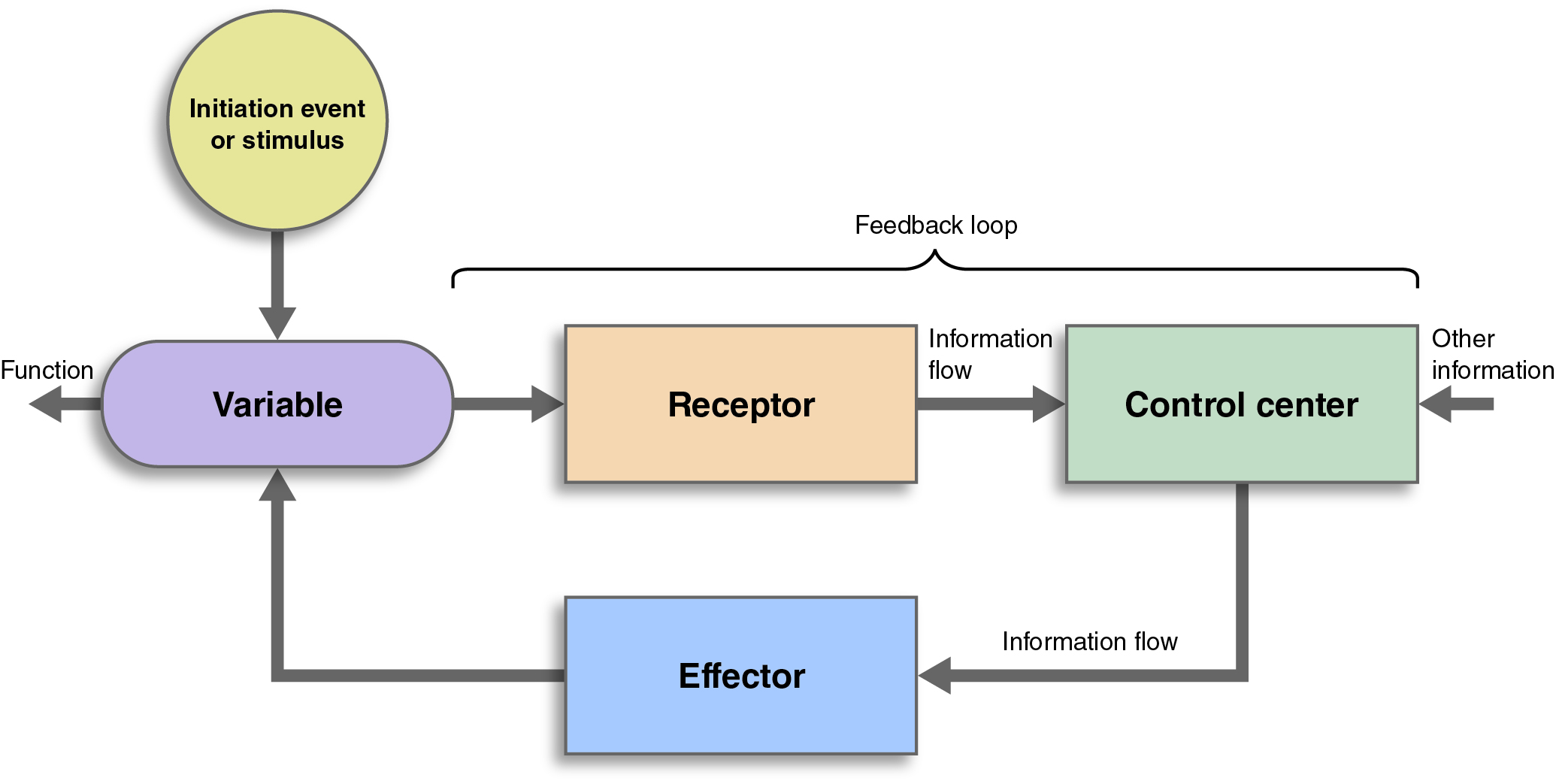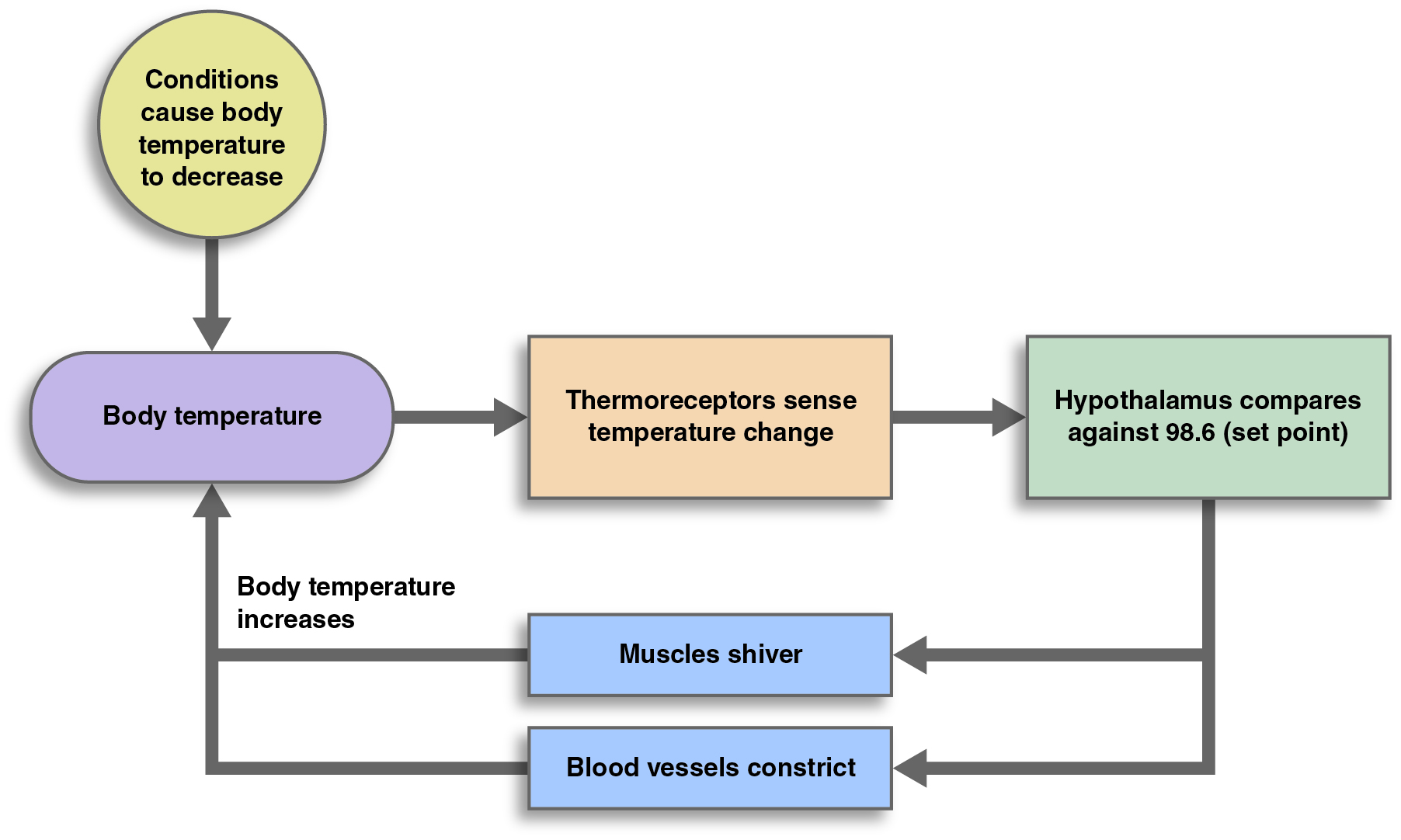20 Homeostasis Terminology
The maintenance of homeostasis in the body typically occurs through the use of feedback loops that control the body’s internal conditions.
Feedback Loop
(Definition) A system used to control the level of a variable in which there is an identifiable receptor (sensor), control center (integrator or comparator), effectors, and methods of communication.
We use the following terminology to describe feedback loops:
- Variables are parameters that are monitored and controlled or affected by the feedback system.
- Receptors (sensors) detect changes in the variable.
- Control centers (integrators) compare the variable in relation to a set point and signal the effectors to generate a response. Control centers sometimes consider information other than just the level of the variable in their decision-making, such as time of day, age, external conditions, etc.
- Effectors execute the necessary changes to adjust the variable.
- Methods of communication among the components of a feedback loop are necessary in order for it to function. This often occurs through nerves or hormones, but in some cases receptors and control centers are the same structures, so that there is no need for these signaling modes in that part of the loop.

Terminology in this area is often inconsistent. For example, there are cases where components of a feedback loop are not easily identifiable, but variables are maintained in a range. Such situations are still examples of homeostasis and are sometimes described as a feedback cycle instead of a feedback loop.
Feedback Cycle
(Definition) Any situation in which a variable is regulated and the level of the variable impacts the direction in which the variable changes (i.e. increases or decreases), even if there is not clearly identified loop components.
With this terminology in mind, homeostasis then can be described as the totality of the feedback loops and feedback cycles that the body incorporates to maintain a suitable functioning status.
Example: Air Conditioning
Air conditioning is a technological system that can be described in terms of a feedback loop. The thermostat senses the temperature, an electronic interface compares the temperature against a set point (the temperature that you want it to be). If the temperature matches or is cooler, then nothing happens. If the temperature is too hot, then the electronic interface triggers the air-conditioning unit to turn on. Once the temperature is lowered sufficiently to reach the set point, the electronic interface shuts the air-conditioning unit off. For this example, identify the steps of the feedback loop.
Terms Applied to Temperature
Consider one of the feedback loops that controls body temperature.

Variable
In this instance, the variable is body temperature.
Receptors
Thermoreceptors detect changes in body temperature. For example, thermoreceptors in your internal organs can detect a lowered body temperature and produce nerve impulses that travel to the control center, the hypothalamus.
Control Center
The hypothalamus controls a variety of effectors that respond to a decrease in body temperature.
Effectors
There are several effectors controlled by the hypothalamus.
- blood vessels near the skin constrict, reducing blood flow (and the resultant heat loss) to the environment.
- Skeletal muscles are also effectors in this feedback loop: they contract rapidly in response to a decrease in body temperature. This shivering helps to generate heat, which increases body temperature.

